CODES E047, B333 THROUGH B337 NEW DIAGNOSIS PROCEDURE

SUBJECT: CODES E047, B333, B334, B335, B336, AND/OR B337 - NEW DIAGNOSIS PROCEDURE
MODELS/YEARS: 1986-92 TORONADO/TROFEO
This bulletin cancels and supersedes Dealer Technical Bulletins 90-T-195 and 92-T-141 which should be discarded.
Some 1986-92 Toronado/Trofeo models, may exhibit intermittent setting of data line codes E047, B333, B334, B335, B336, and/or B337. These may all be set at one time or in any combination. Single codes should be diagnosed using the appropriate trouble tree in the Toronado/Trofeo Service Manual. In addition to the codes, some of the following may also occur:
o IPC, CRT, and/or the HVAC/ECC flashes on and off or bright/dim
o Trip odometer resets to zero (0)
o ECC switches to full heat at high blower speed out the front defrost ducts
o Erroneous displays appear on the IPC or ECC
o ECC panel will not respond to pressing of buttons
o CRT, DIC, or ECC may display SYSTEM PROBLEM
These conditions may be caused by either a damaged data line circuit or one of the components connected to the data line. When operating normally, the serial data line voltage should continually fluctuate from 0 to 5 volts.
DIAGNOSIS: If the serial data line has been shorted to ground, the voltage at the Assembly Line Data Link (ALDL) will be 0 V. If it has been shorted to voltage, it will be over 5 V. If one of the components on the serial data line is affecting the data line voltage, the serial data voltage at the ALDL connector will be a steady value anywhere between . 1 and 5 volts (e.g., 2.7V, 4.8V, etc.).
CONDITION PRESENT: This section explains how to find the cause of a data line condition that is present all the time or can be duplicated for diagnosis. Using the instructions in this section, perform the appropriate "condition present diagnosis" trouble tree.
The condition present diagnosis charts have many branches that instruct to check for voltage/ground on the 800 circuit. First, check for voltage at the specified pin with the ignition on (there should be less than .1 volts). If there is no voltage, check the circuit for resistance to ground (should read open to ground on the highest resistance setting). The trouble trees are written so that whenever these checks are made the right components are connected/disconnected to prevent false readings. Therefore, do not reconnect components until instructed to do so or when diagnosis is completed.
If the voltage/resistance test indicates there is a problem in part of the 800 circuit, check that section of the 800 circuit by tracing the wire and checking connections in that segment. Refer to page 8A-50-0 in the Chassis Service Manual for circuit layout. If the circuit is difficult to trace or no problem in the circuit is visible, it may be better to restring the segment involved.
Note: Data line conditions tend to be intermittent and may disappear while disconnecting/reconnecting components. Therefore, double check each step of the trouble tree to make sure the conditions have not disappeared during testing. If they have disappeared, return to the last step taken while the condition was present and continue when condition returns. If the condition cannot be duplicated again or the condition present diagnosis does not lead to the fix, perform the condition not present diagnosis.
CONDITION NOT PRESENT: Sometimes the conditions can be duplicated by carefully warming the data line components with a heat gun and/or lightly tapping on them. If the condition cannot be duplicated on the vehicle during diagnosis, follow the procedure below:
1. Make sure that the grounds on the block near the starter solenoid or behind the power steering pump behind the engine block and on the fender near the battery, are clean and tight. Make certain there are star washers on the stud and that the studs are free of corrosion.
2. Check the BCM EPROM and EEPROM and ECM PROM or MEM-CAL assembly for proper insertion into their respective sockets. Inspect components for bent or damaged legs.
3. Make sure both BCM and ECM have the correct PROM's for that model year.
4. If the source of the intermittent problem has not been found and the intermittent condition persists:
A. Verify good connections at the following components. Check each connection for proper latching and pins seated in the connector.
B. Remove the following components, one at a time, in the order shown, using the Toronado/Trofeo Service Manual Section 8A-50. Jumper the 800 circuit while checking for reoccurrence of the intermittent condition. The order listed represents most likely to least likely cause of a multiple communications code condition:
Oldsmobile:
---------- o ECC Head
o BCM
o Programmer
o ECM
o Central Power Supply (CPS) (on 1986-90 models)
o BCM EPROM
o IPC
o Chime Module (on 1986 and 1987 models only)
o ECM and EPROM
o BCM EEPROM
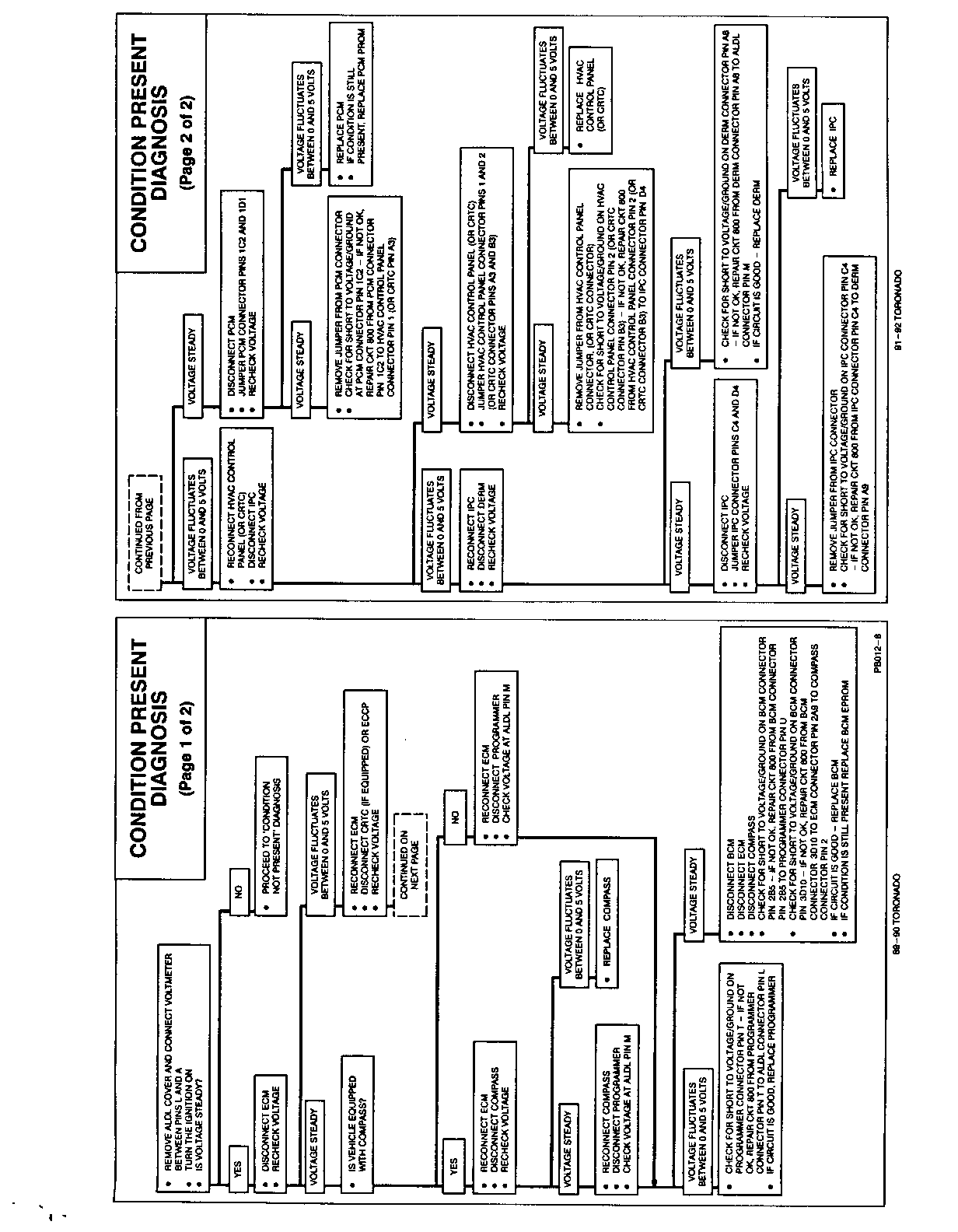
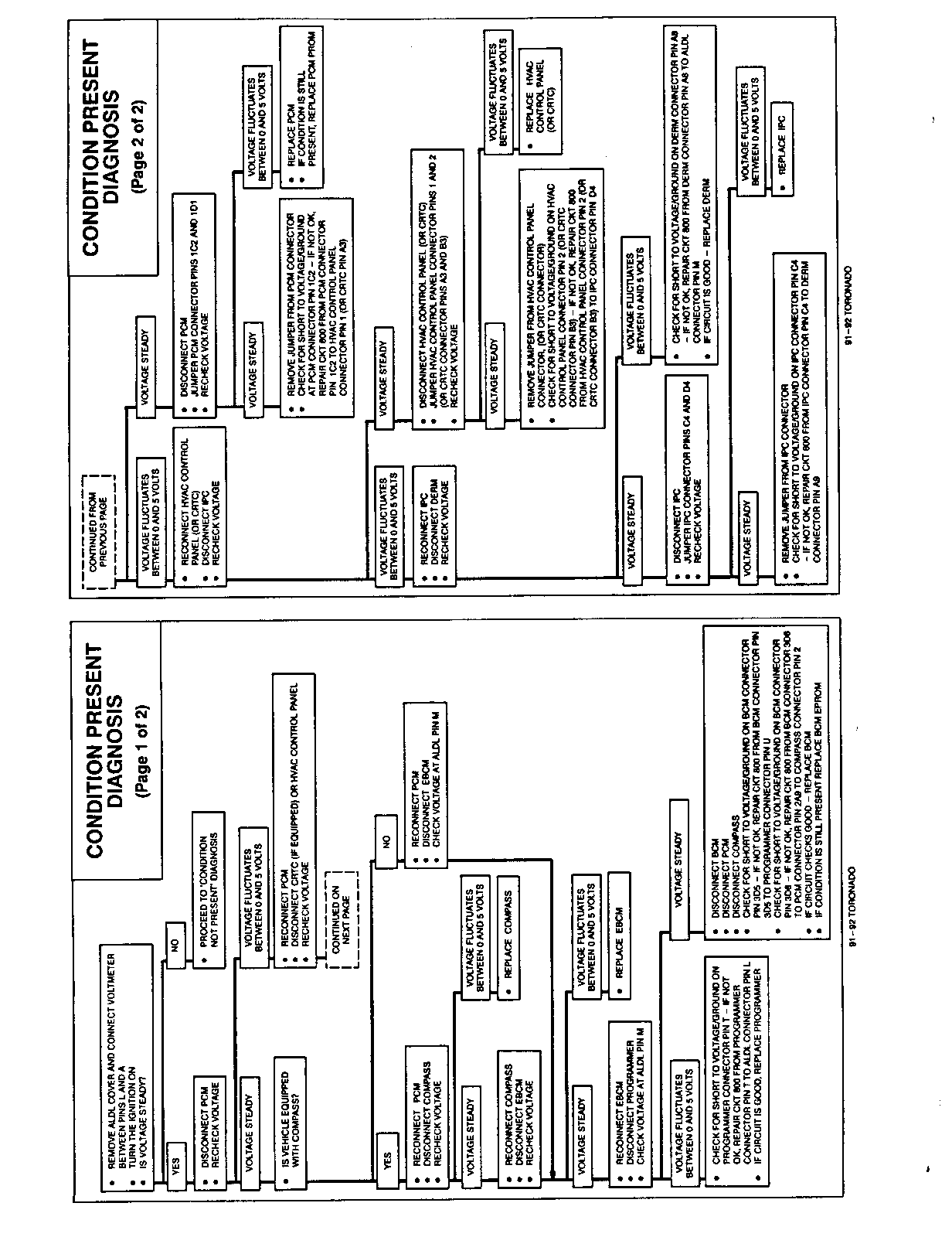
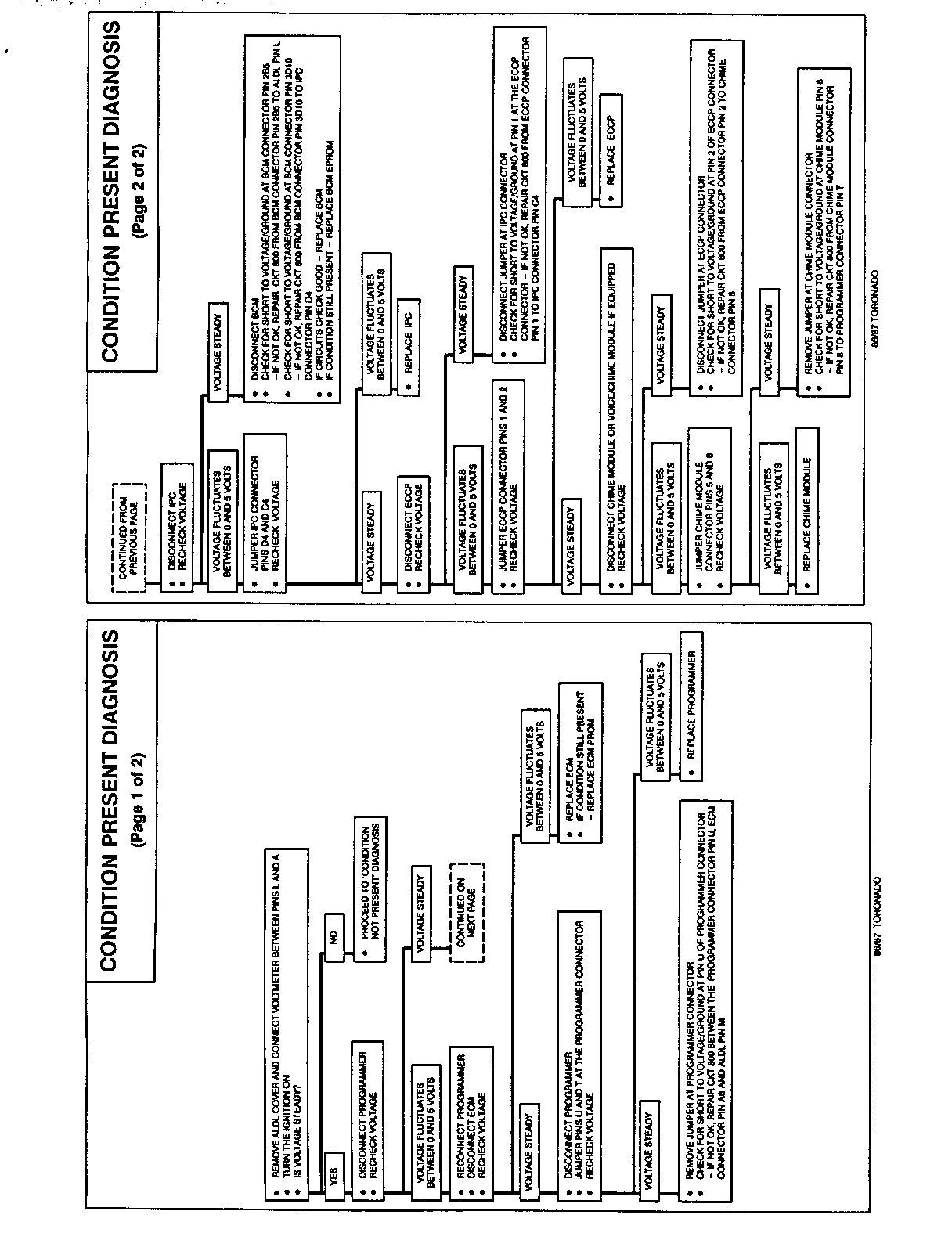
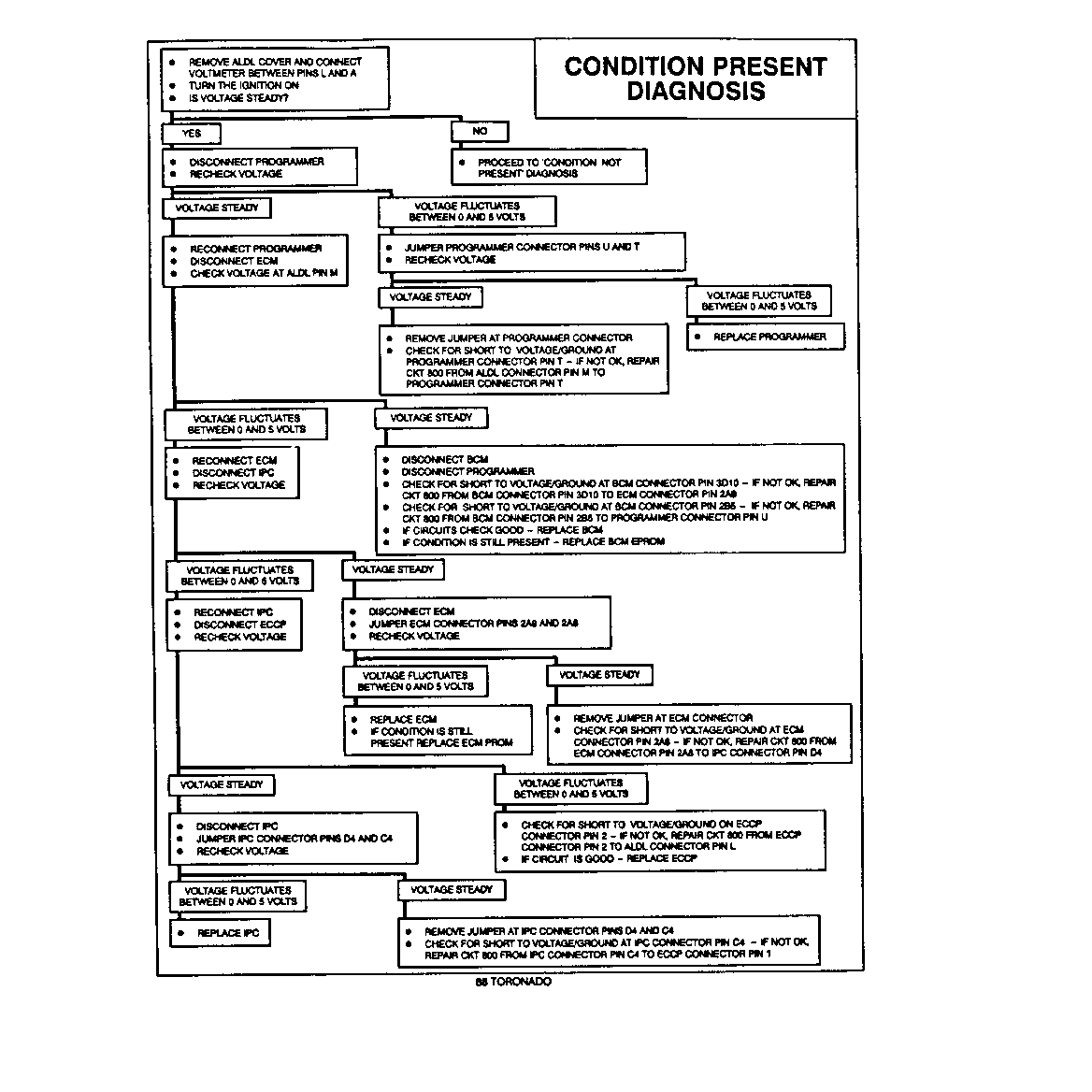
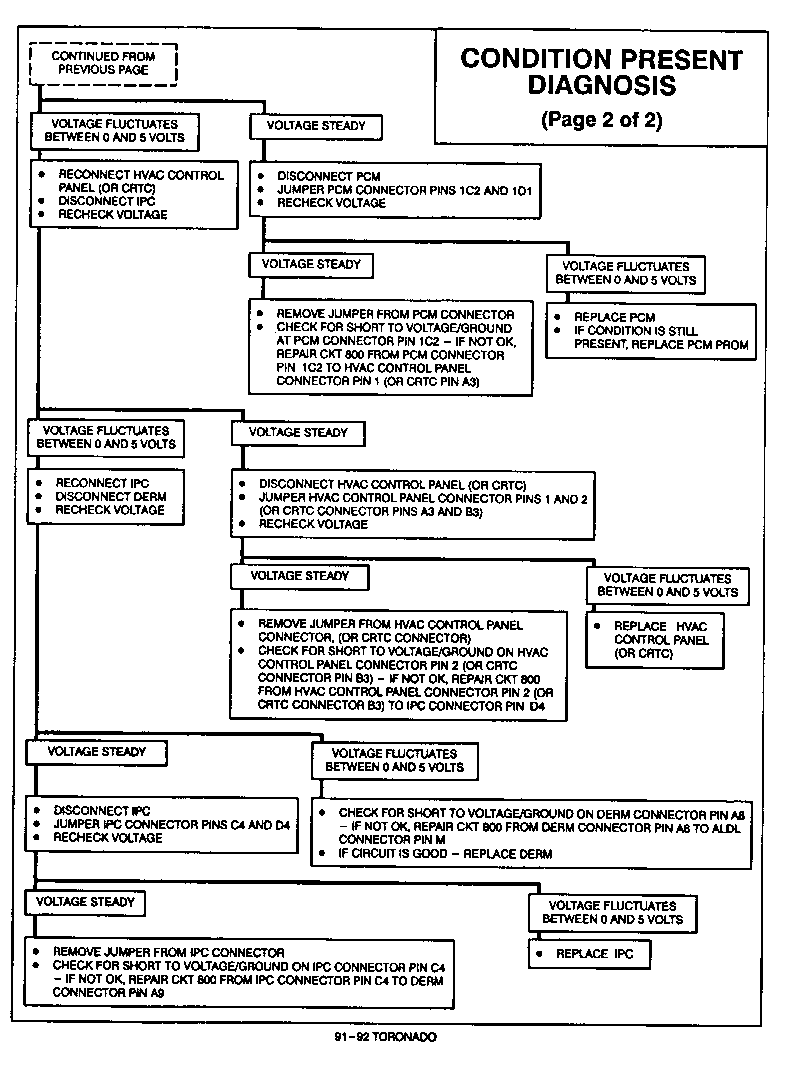
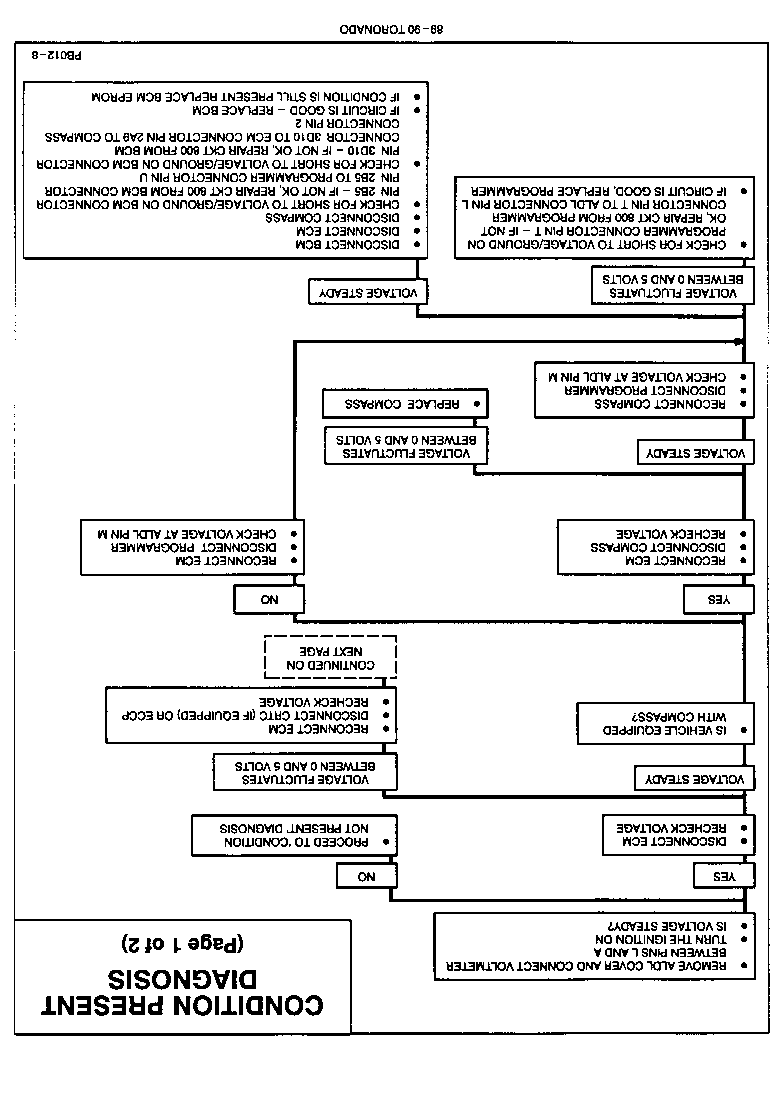
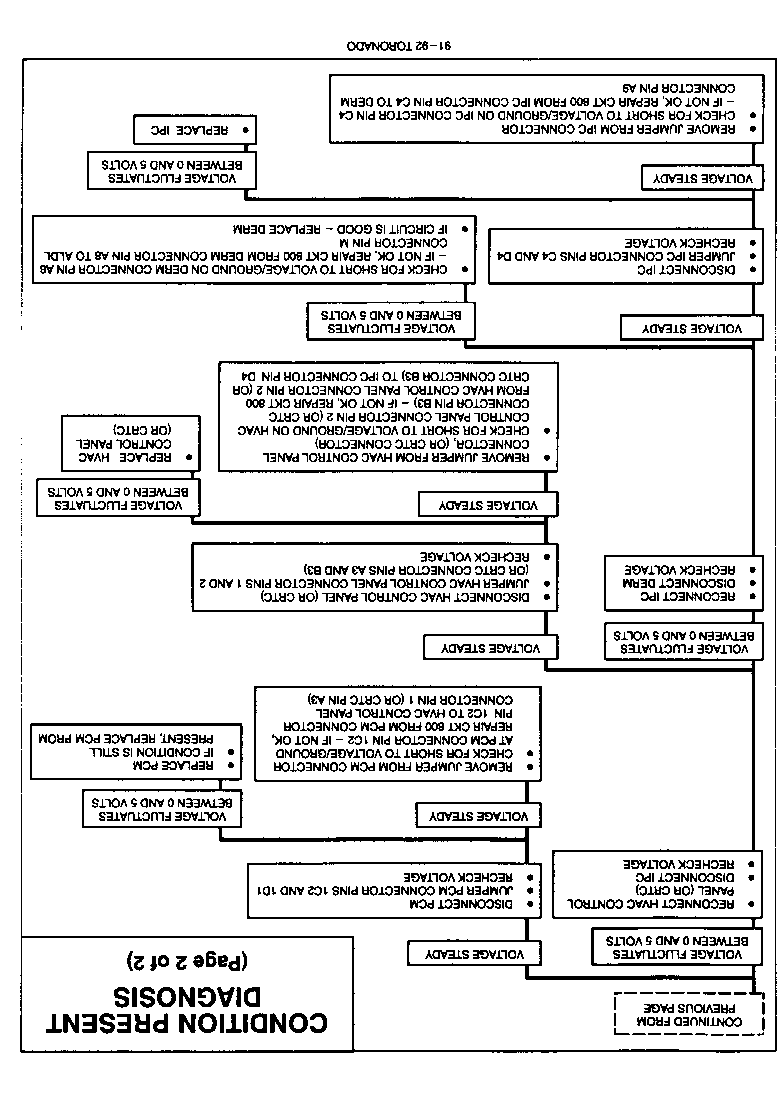
General Motors bulletins are intended for use by professional technicians, not a "do-it-yourselfer". They are written to inform those technicians of conditions that may occur on some vehicles, or to provide information that could assist in the proper service of a vehicle. Properly trained technicians have the equipment, tools, safety instructions and know-how to do a job properly and safely. If a condition is described, do not assume that the bulletin applies to your vehicle, or that your vehicle will have that condition. See a General Motors dealer servicing your brand of General Motors vehicle for information on whether your vehicle may benefit from the information.
